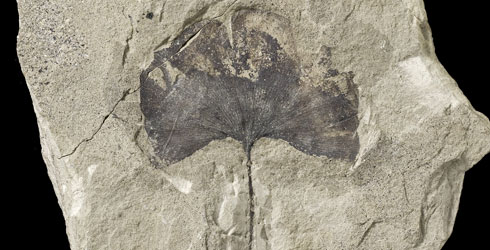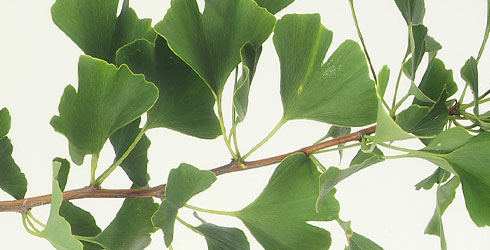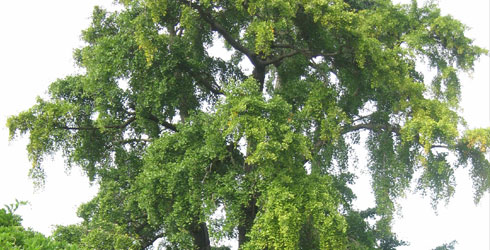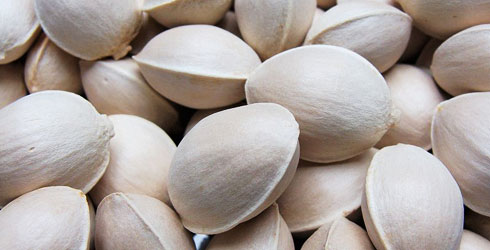Ginkgo gardneri
Ginkgos are 'living fossils' that are represented now only by G. biloba, but are recognisable in the fossil record up to 270 million years ago.
They first appeared in the Permian period and reached their maximum diversity in the Jurassic and early Cretaceous, alongside cycads, conifers, ferns and the earliest flowering plants.
It is thought that ginkgos evolved from seed ferns during the late Palaeozoic, but recent molecular evidence suggests that cycads might be their nearest living relatives.
Ginkgo gardneri was first described in 1936 by Rudolf Florin (1894–1965), a Swedish botanist and eminent evolutionary scientist. He named the species after J. Starkie Gardner (1844–1930), a metal worker and amateur botanist from London who, besides collecting and describing many fossil plants, built and erected Victoria Gate in Hyde Park.
Species detail
-

Distribution
Ginkgo gardneri lived in subtropical climates 60 million years ago. But fossils of the plant have only been found in rocks on the island of Mull, in Scotland. How did they get there?
-

Biology
Like Ginkgo biloba, Ginkgo gardneri was probably a large tree. Find out how it reproduced, and why G. biloba trees are unpopular in cities.
-

Behaviour
Ginkgo trees reach 10m before producing side branches in an attempt to outgrow their competitors. But, they failed to compete with fast growing flowering plants. Find out why.
-

Preservation
Fossil Ginkgo leaves have been unearthed almost intact. Discover how they were preserved.
Images

Ginkgo gardneri fossil.
© Natural History Museum, London
Ginkgo biloba leaves.
© Natural History Museum, London
Ginkgo biloba, Kew Gardens
© Istvánka, GNU Free Documentation Licence V1.2
Ginkgo seeds.
© Aomorikuma, GNU Free Documentation Licence V1.2
Ginkgo growing at the entrance to the Natural History Museum.
© Natural History Museum, LondonAuthor
Lil Stevens
Curator of Palaeobotany
A word from the author
"Ginkgo is the oldest surviving genus among seed plants. The leaves of Ginkgo gardneri are indistinguishable from its modern relative Ginkgo biloba - they have stayed exactly the same shape for 60 million years. Is this because they are perfectly suited to their environment or is there another reason? Why have they stayed the same when so much has changed?"
Toolbox
References
Boulter, M C and Kvacek, Z (1989). The Palaeocene flora of the Isle of Mull. Special Papers in Palaeontology No. 42. The Palaeontological Association.
Royer, D L, Hickey, L J and Wing, S L (2003). Ecological conservatism in the “living fossil” Ginkgo. Palaeobiology, 29(1): 84–104.
